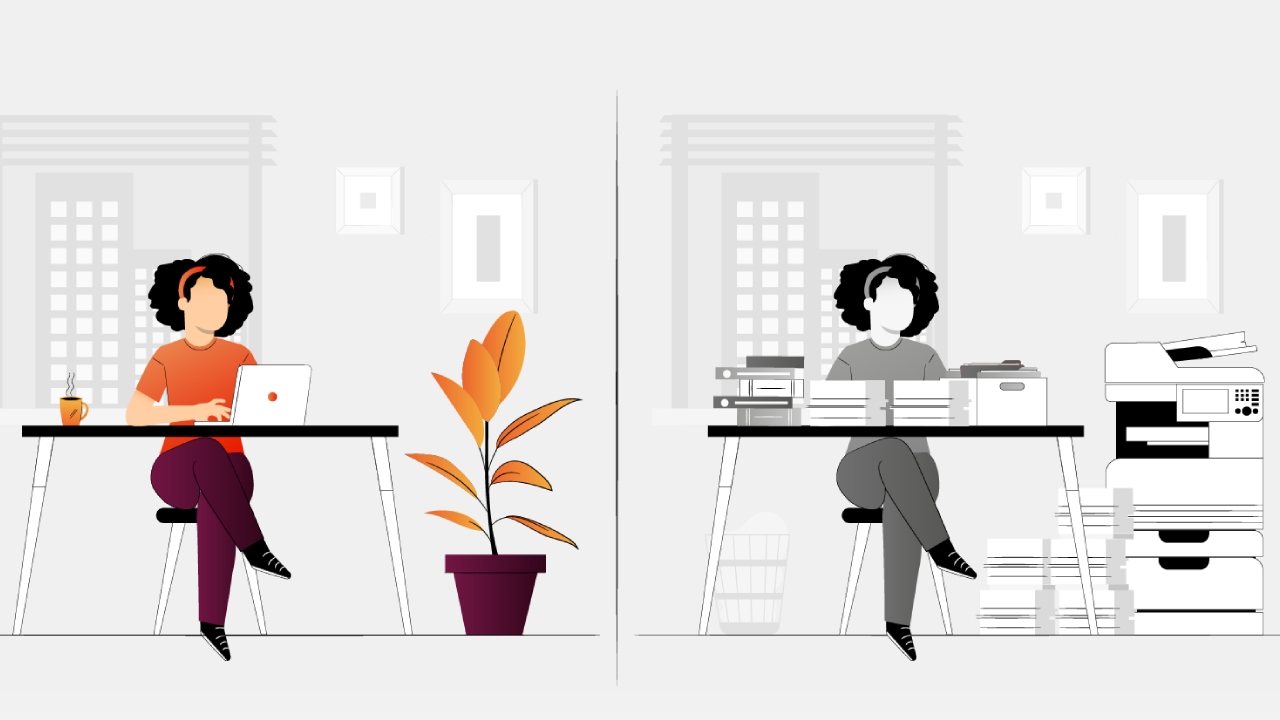Countless generations have grown up with paper at their fingertips. Without having to worry about its origin, composition or impact. Fortunately, it is a material that is relatively easy to recycle through clean energy, which can even come from renewable resources. However, the chromatic variety offered by an industry that has not ceased to sophisticate its products has ended up stiffening the process. On the other hand, and as a starting point, although we will go into this in more detail later, the following notion should be clear: paperless culture is not only recycling; paperless culture is, above all, not using paper. Let’s continue.
Let’s go to the source, to the freshly felled tree. The wood is processed into panels that end up forming a watery pulp. The use of chlorine helps to bleach it to give it the brightness of the typical packet of foil we’ve all had around the house. The excess water is drained away, allowing the pulp strands to bind together through a process of extreme sieving with rollers which gives the paper its characteristic thinness.
The most demanded woods are poplar, cork, birch and cherry. Also, oak and maple. So much in demand that 50% of the world’s forests and jungles have been razed to the ground. Much of it to make paper.
A life cycle that is too costly
Focusing on the use of paper, charcoal, graphite or clay mines have for decades facilitated its recycling. Even the impact of monochromatic ink, which we have been using since 400 BC, with countless variations, was relatively well absorbed. But then came resins of fossil and synthetic origin, which cannot be described as environmentally friendly by any stretch of the imagination. And then there were the pigments, which are the cause of the highest level of pollution because they are composed of heavy metals such as cadmium, lead and mercury.
Fortunately, institutions such as the European Ink Association (EUPIA) became aware of the looming disaster and went so far as to expressly prohibit its use. The limitations worked. And they led to the appearance on the market of plant-based alternatives of renewable origin and water-based inks whose Volatile Organic Compounds (VOCs) do not reach 1%.
But there was still another tsunami wave to hit. In the early 2000s, printers moved from being specialised office supplies to become one of the most common electronic stationery devices in households around the world. And with it, the proliferation of ink cartridges that include, in addition to plastic and inks, electronic components. In Spain alone, 32 million units are used each year.
A sufficient volume to take action on the matter and dedicate specific clean points to facilitate their recycling, as has been the case for years in some European countries such as France.
The evolution is positive. In 2019, the last year before the pandemic, Spaniards recycled 4,417,500 tonnes of paper and cardboard. According to the Spanish Association of Pulp, Paper and Cardboard Manufacturers (Aspapel), these figures would be equivalent to 44 large football stadiums filled to capacity; and the collection rate (i.e. paper collected for recycling as a percentage of total paper consumption) is 64.3%.
The problem is that not all paper can be recycled. In this group we find fax paper, photographic paper, self-adhesive paper…
With all these data, the maxim we pointed out at the beginning of this article is consolidated: paperless is about reducing paper use, not recycling paper.
As we’ve already discussed, there’s a shortcut to minimising the impact of both manufacturing and recycling: paperless. Digital transformation, coupled with the use of new technologies, not only improves business performance and efficiency, but also delivers environmental benefits for both the planet and ourselves.
E-mail, electronic signatures, backups and digitisation of documents (e.g. digital certificates) allow cost savings on paper documents, therefore reducing the environmental impact of a company’s operation.
Moreover, if we demonstrate that the paperless strategy is legally and juridically consistent, and amplify it, the “pull effect” towards our partners and/or suppliers will multiply exponentially the result.
Extending your commitment to your value chain. This is the way in which the number of brands that are aware of the need to transform the culture of paper use through guidelines that are respectful of people and their own environment is growing every day. And don’t forget: a paperless office brings advantages for professionals, for the company and for society, both locally and globally.
